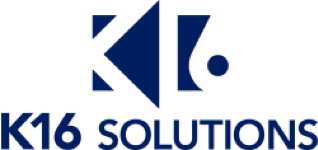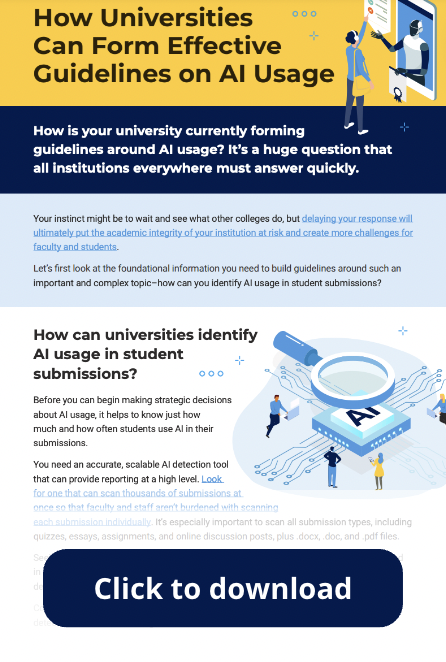How Universities Can Form Effective Guidelines on AI Usage
How is your university currently forming guidelines around AI usage? It’s a huge question that all institutions everywhere must answer quickly.
Your instinct might be to wait and see what other colleges do, but delaying your response will ultimately put the academic integrity of your institution at risk and create more challenges for faculty and students.
Let’s first look at the foundational information you need to build guidelines around such an important and complex topic–how can you identify AI usage in student submissions?
How can universities identify AI usage in student submissions?
Before you can begin making strategic decisions about AI usage, it helps to know just how much and how often students use AI in their submissions.
You need an accurate, scalable AI detection tool that can provide reporting at a high level. Look for one that can scan thousands of submissions at once so that faculty and staff aren’t burdened with scanning each submission individually. It’s especially important to scan all submission types, including quizzes, essays, assignments, and online discussion posts, plus .docx, .doc, and .pdf files.
Seeing the big picture of which students use AI to assist in their submissions the most and in what classes/assignments will empower your institution to make the most informed decisions when building these guidelines.
Colleges like South Piedmont Community College (SPCC) have already begun to use AI detection tools to craft their guidelines.
“The granular information provided by Scaffold AI Detection allows administrators the ability to observe AI usage across the institution down to a single student. Faculty can identify the AI usage specific to their courses, students, and assignments. This data could provide guidance on what type of education, parameters, and/or policies would need to be in place to promote an innovative and healthy use of AI.”
– Catalina Ramírez, Director of e-learning, South Piedmont Community College

Tips for building effective guidelines on generative AI in higher education
Once you better understand how often and when students are using AI to complete assignments, you can begin a bigger discussion about what guidelines are needed.
The goal should not be to create all-encompassing, unchanging rules, but rather guidelines that can easily adapt to changes and new AI capabilities as this technology evolves.
Here are some tips to form guidelines for AI usage in higher education:
- Include all relevant stakeholders in the discussion.
- Create guidelines that can shift with changes and advances in AI capabilities.
- Be transparent with all communications about generative AI best practices.
- Identify any AI detection tools you are using to students.
- Educate students about potential data inaccuracies that AI may generate.
- Provide faculty, staff, and students training on the most effective ways to use this technology.
- Discuss how AI may reveal private personal information without permission and how to protect sensitive student data.
What are some AI guidelines that institutions have already created?

There seem to be three main stances that institutions are currently taking regarding students using AI:
- Banning the use of AI tools altogether,
- Allowing AI tools for specific, identified purposes,
- And allowing AI tools, for the most part, as long as they are properly cited.
According to research:
- 27% of universities have no clear guidelines or policies.
- 51% of universities allow instructors to decide on guidelines for their courses for now.
- 18% of universities have banned the use of AI at all unless instructors say otherwise.
- 4% of universities allow the usage of AI with citation unless instructors say otherwise.
Final thoughts
As a leader in the EdTech space, K16 Solutions is here to provide universities with the right technology to make their own decisions around important topics like AI usage. Our goal is not to tell universities what to do.
As a response to AI tools like ChatGPT being so readily available to the public, K16 teamed up with GPTZero, the world’s #1 AI content detector with over 1 million users, to create a scalable AI detection tool for universities. Schedule a free, no-strings-attached demo to see how Scaffold AI Detection could work for your institution.


